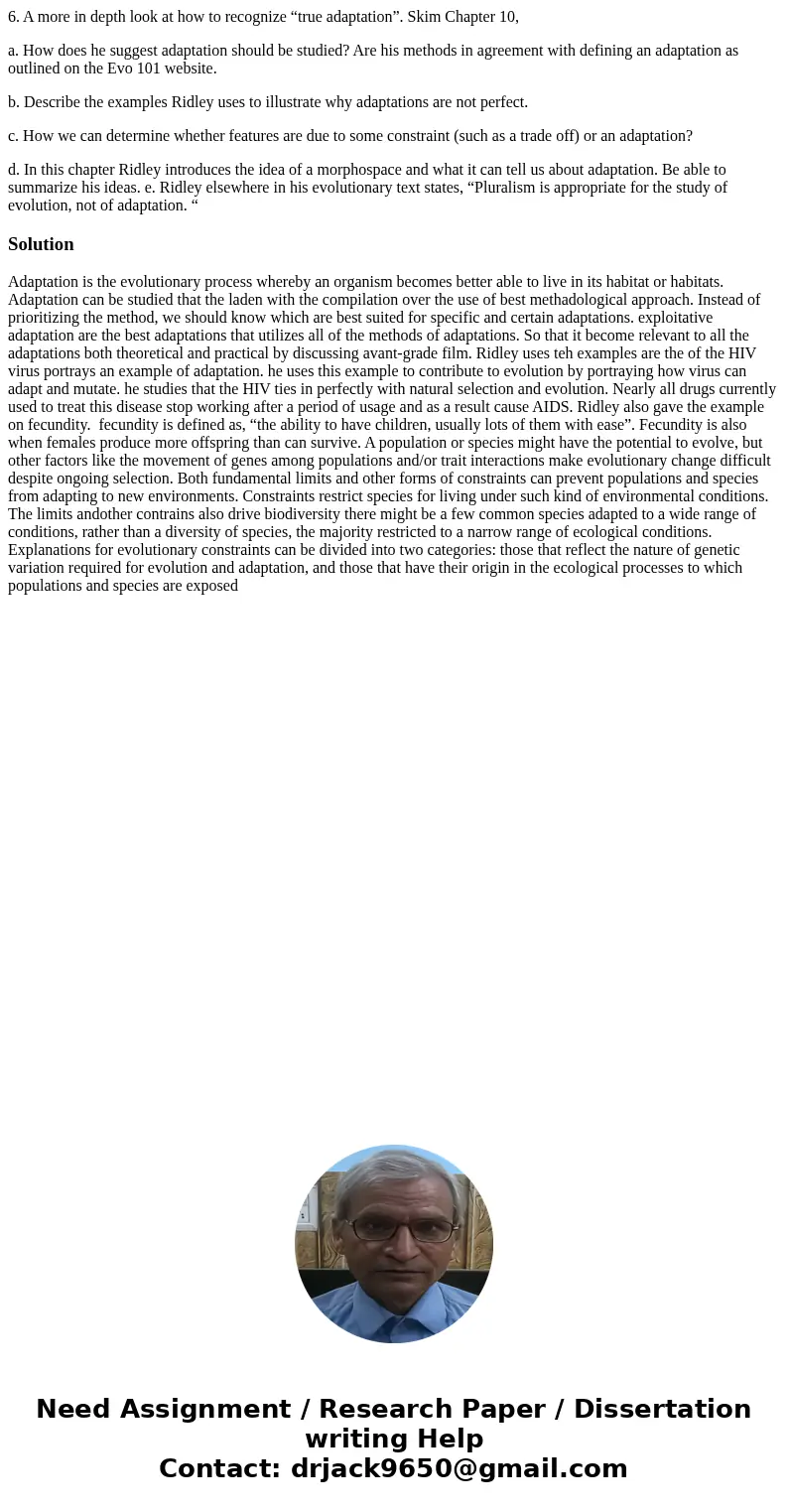6 A more in depth look at how to recognize true adaptation S
6. A more in depth look at how to recognize “true adaptation”. Skim Chapter 10,
a. How does he suggest adaptation should be studied? Are his methods in agreement with defining an adaptation as outlined on the Evo 101 website.
b. Describe the examples Ridley uses to illustrate why adaptations are not perfect.
c. How we can determine whether features are due to some constraint (such as a trade off) or an adaptation?
d. In this chapter Ridley introduces the idea of a morphospace and what it can tell us about adaptation. Be able to summarize his ideas. e. Ridley elsewhere in his evolutionary text states, “Pluralism is appropriate for the study of evolution, not of adaptation. “
Solution
Adaptation is the evolutionary process whereby an organism becomes better able to live in its habitat or habitats. Adaptation can be studied that the laden with the compilation over the use of best methadological approach. Instead of prioritizing the method, we should know which are best suited for specific and certain adaptations. exploitative adaptation are the best adaptations that utilizes all of the methods of adaptations. So that it become relevant to all the adaptations both theoretical and practical by discussing avant-grade film. Ridley uses teh examples are the of the HIV virus portrays an example of adaptation. he uses this example to contribute to evolution by portraying how virus can adapt and mutate. he studies that the HIV ties in perfectly with natural selection and evolution. Nearly all drugs currently used to treat this disease stop working after a period of usage and as a result cause AIDS. Ridley also gave the example on fecundity. fecundity is defined as, “the ability to have children, usually lots of them with ease”. Fecundity is also when females produce more offspring than can survive. A population or species might have the potential to evolve, but other factors like the movement of genes among populations and/or trait interactions make evolutionary change difficult despite ongoing selection. Both fundamental limits and other forms of constraints can prevent populations and species from adapting to new environments. Constraints restrict species for living under such kind of environmental conditions. The limits andother contrains also drive biodiversity there might be a few common species adapted to a wide range of conditions, rather than a diversity of species, the majority restricted to a narrow range of ecological conditions. Explanations for evolutionary constraints can be divided into two categories: those that reflect the nature of genetic variation required for evolution and adaptation, and those that have their origin in the ecological processes to which populations and species are exposed
 Homework Sourse
Homework Sourse